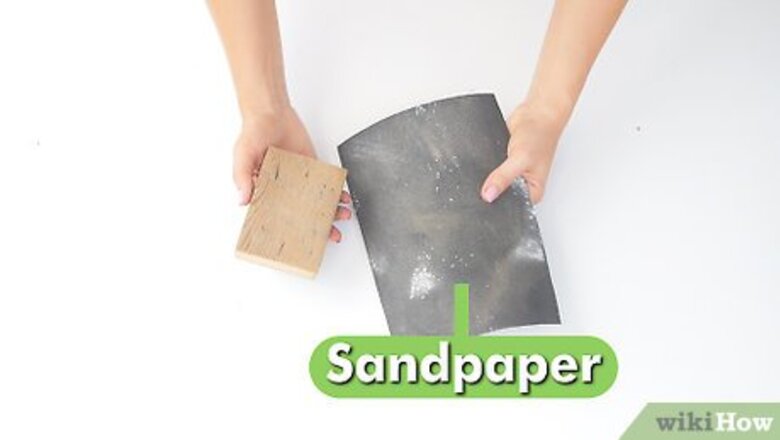
views
X
Expert Source
Patrick CoyePainting Specialist
Expert Interview. 22 July 2020.
Adding a coat of sealer will protect all your hard work, and help it last for years to come.
Prepping the Wood
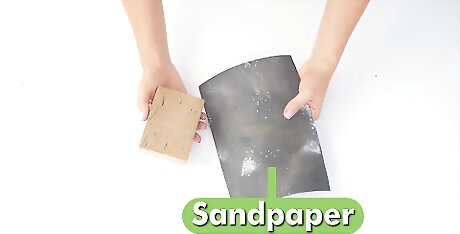
Sand the surface of the object with 140 to 180-grit sandpaper. You can do this with a sanding sponge or with a piece of sandpaper; a sanding sponge will work the best on curved surfaces, however. Also, make sure that you are sanding with the grain of the wood, not across it. Some wooden pieces from craft stores come pre-sanded. If the surface area is completely smooth, skip this step.

Wipe the dust away with a tack cloth. A tack cloth is a special, sticky cloth intended for this purpose. You may find it alongside the sandpaper in the craft store or in the hardware store. If you can't find a tack cloth anywhere, try a damp cloth instead. It would be a good idea to do this, even if you didn't sand your piece; items bought from stores are sometimes dusty, which can prevent the primer and paint from sticking.
Apply a coat of primer. You can use the brush-on kind or the spray-on kind. This will seal the wood surface, and help it take the paint better. It will also help the paint show up better, especially if you are using a light color. Prime the front and sides first, let them dry, then prime the back.
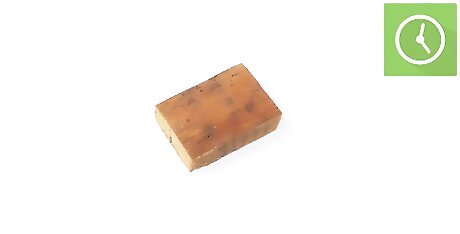
Allow the primer to dry before moving on. For an even smoother finish, you can sand the first coat of primer, wipe it clean, then apply more primer over it. Do this a few more times until there no ridges remain.
Painting and Sealing the Wood
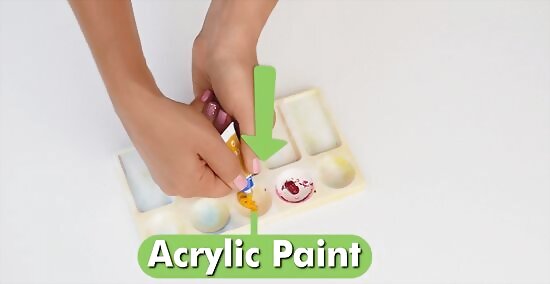
Pour a dollop of acrylic paint onto a palette. Choose a color for the background, then pour out a small amount onto a palette. Acrylic paint dries quickly, so don't pour out your other colors just yet. You can use the cheap, craft-grade acrylic paint that comes in bottles, or you can use the more-expensive artist's grade that comes in tubes. If you are using the artist's grade, dilute it with a few drops of water until it has the consistency of cream first. You can use small dishes, plastic lids, and paper plates as palettes.
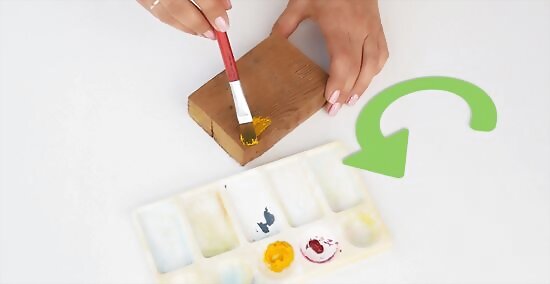
Apply a coat of paint over your piece. Use a foam brush or a wide, flat paintbrush to apply the paint. Let the paint dry, then apply a second coat, if needed. Let this second coat dry as well. Do the front and sides first, let them dry to the touch, then do the back. Look for brushes made from taklon, katakana, or sable. Avoid camel hair brushes or stiff, bristle brushes. Don't overload the brush with paint. The paint should come no more than halfway up the bristles.
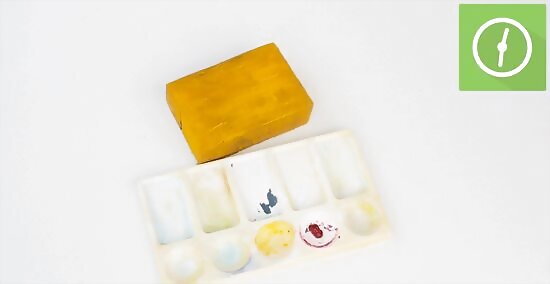
Let the paint dry, then add a second coat, if needed. How long this takes depends on the brand that you are using. Most types of acrylic paint will dry in about 20 minutes, however. If the paint is too thin, add another coat of paint, and let it dry as well. Take this time to clean your brush(s) with water. Do not let the paint dry on the brushes.
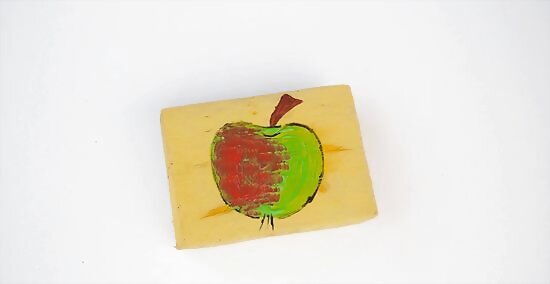
Add your designs and details. You can use stencils or trace designs onto the wooden piece. You can also free-hand the designs as well. Apply the base color first, let it dry, then add the details. For example, if you wanted to paint a smiley face, you'd paint the yellow circle first, let it dry, then add the smile and eyes. Dip the brush in water often to keep the paint wet, even if you are using one color. If you are working with multiple colors, keep a cup of water nearby. Rinse the brush with water before switching to a new color.
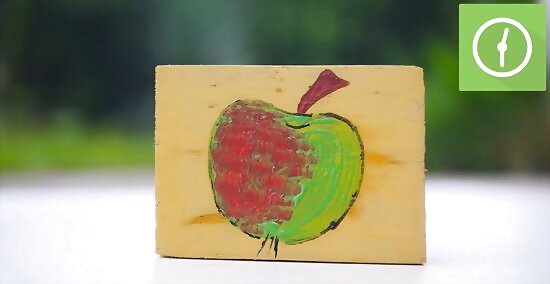
Let the paint dry completely. Refer to the label on you tube of paint for exact drying times. Just because something feels dry to the touch does not mean that it is ready to handle or take on sealer. Every brand will be different, but you can expect this to take about 24 hours.
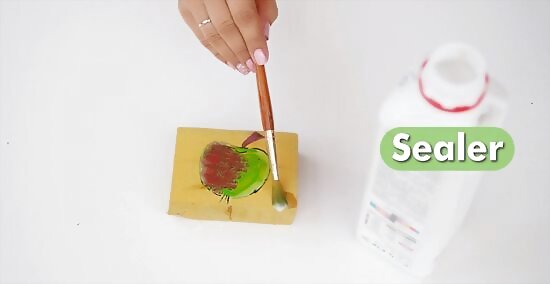
Apply 1 to 2 coats of sealer. Sealers come in many different finishes, including matte, glossy, and satin; choose one that you like the best. Apply a thin coat of spray-on or brush-on sealer, then let it dry. Apply a second coat, if needed, and let that one dry too. If you are using the brush-on kind, apply it using a wide, foam brush. If you are using a spray-on varnish, be sure to work in a well-ventilated area.
Trying Other Techniques
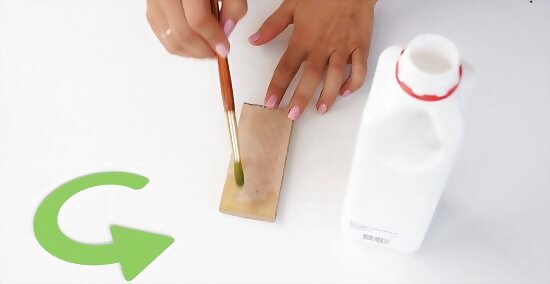
Skip the priming if you want to paint a design over bare wood. Instead, consider painting over the entire piece using a wood stain or a sealer. Wait for the stain or sealer to dry, then paint your designs onto the wood. Be sure to seal everything after the paint dries.
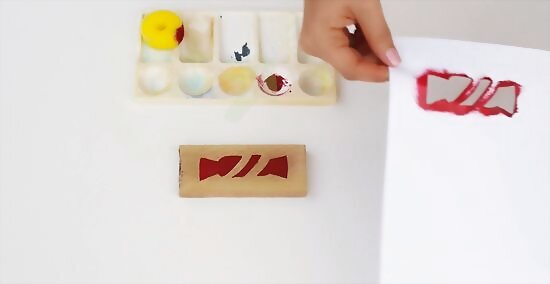
Add designs using stencils. Buy or make a stencil, then place it over the wood. Paint over the stencil using decoupage glue; this will seal the wood and prevent the paint from leaking under the stencil. Let the decoupage dry, then paint over the stencil. Peel the stencil away while the paint is still damp. Seal the wood using a spray-on or brush-on sealer. You can make stencils using contact paper or self-adhesive vinyl. You can use this method over bare, unsealed wood.
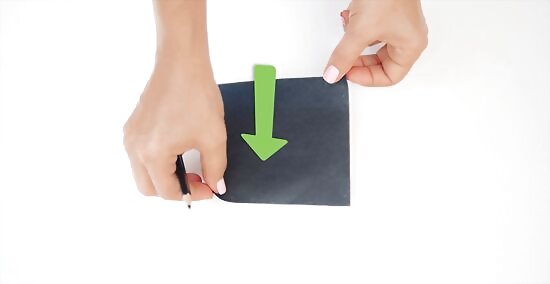
Use graphite paper to trace designs, then fill them in. Place a sheet of graphite paper over your piece of wood, graphite-side-down. Draw your design, then lift the paper away. Go over the outline using a thin, painted brush, then fill the design in using a flat brush. This method works best over painted wood. You can do it over bare wood, but the paint may not stick as well. If you don't know how to draw, print the design out on tracing paper first, then place the tracing paper on top of the graphite paper. If you are working over a dark-colored surface, make some chalk graphite paper instead: cover the back of a piece of paper with chalk, place it chalk-side-down onto the wood, then trace your design.
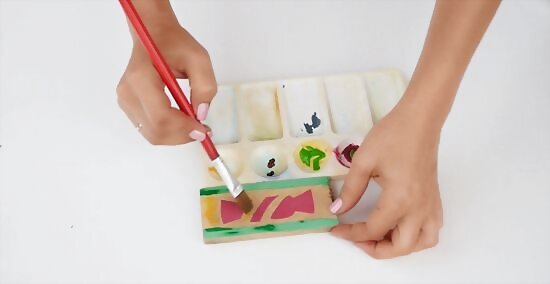
Create a tinted stain to show off the wood grain. Apply a thin layer of acrylic paint using a dry paintbrush. Dip a wet cloth in a small amount of paint, then rub it over the wood. This will help blend strokes together without covering up the wood grain. The cloth should be wet, but not dripping. Alternatively, you can paint over the entire piece using watered down acrylics or watercolor paints.
Make a DIY chalkboard. Paint the surface of the wood with 2 to 3 coats of chalkboard paint. Let the paint dry, then paint designs using normal paint onto it, if desired. Allow the chalkboard paint dry and cure completely. Cover the board with chalk, then wipe the chalk off. Keep the designs on the edges of the wooden piece so that you can use the surface as a chalkboard. You do not need to prime a DIY chalkboard, but sanding it would not be a bad idea.


















Comments
0 comment